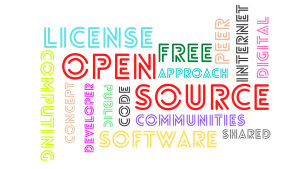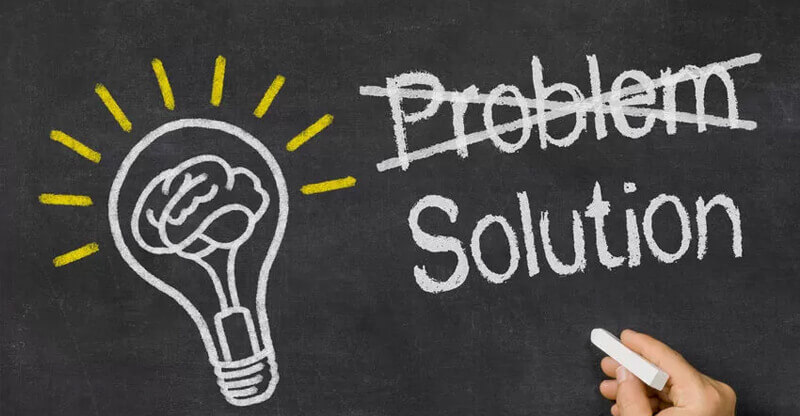Open Source Software- Sustainability and Reliance
Because of the way open source software communities function, it becomes easy for teams from the top software development company in Kolkata to work effectively and resolutely to produce high-quality goods sustainably.
What is Open Source?

Some software has source code that the person can only change, the group or company from the top software development company in Kolkata that produced it still has sole control. Such software is “proprietary” or “closed source” software.
This is where open source differs from proprietary software. Its creators make the source code accessible to anyone looking at, copying, modifying, or sharing it.
Since the source code is accessible to everyone, the term “open source” describes something that may be shared and modified. Open source projects, initiatives, and products support and celebrate the values of meritocracy, quick prototyping, open communication, and community-centred development.
Generally, computer users never see the “source code,” which is the code that computer programmers can update to alter how a bit program or application functions.
Open Source as a Software Development Model
Open source as a software development model enables users to view the software’s source code, alter it to their needs, and even redistribute it. When software is made accessible, it includes a licence that spells out exactly what rights and responsibilities a user has if they wish to share it unchanged or tweak it before sharing. A community can work together to build this software, or a single vendor from the top software development company can set the project’s direction.
Role of Open Source Communities
Members of an open source community add features and resolve bugs as required. These communities may yield high-quality, user-centric innovations far more quickly than proprietary software by tailoring the software to their requirements. The program’s improvements are also likely to be more inclusive, meeting the particular demands of users from different backgrounds and locations. These communities might be more dispersed and diversified than development studios or in-house teams.
The Craze Behind Open Source Software
For various reasons, people favour this kind of software over proprietary software.
Control
Since they have greater control over open-source software, many individuals favour it. They can check the code to ensure it isn’t doing anything they do not want it to do and fix any problematic sections. Since there are many uses to the concept, not just those others think it should be, and even non-programmers can profit from it.
Training
Others appreciate open-source software because it improves their programming skills. Students can efficiently study open source code as they continue to create better software as it is readily available to the public. Students can also present their work to others and invite feedback to enhance their talents. People can share errors they find in the source code of programmes with others to prevent them from making the same errors themselves.
Security
Some people favour it over proprietary software because they believe it to be more dependable and safe. Open source software is available for anyone to access and alter, so someone may find and fix mistakes or omissions that the program’s original writers may have overlooked. Furthermore, you may improve, update, and upgrade open-source software more quickly than proprietary software since many programmers can operate on it without the original developers’ consent.
Stability
Many users choose open-source software over proprietary software for significant, lengthy tasks. Because open-source software’s source code is available to the public, users who depend on it for essential duties can be confident that their tools won’t vanish or become outdated if their original developers cease working on them. Furthermore, open-source software frequently incorporates open standards and runs following them.
Community
A user and development community frequently develops around open-source. That’s not exclusive to open source; meetups and user groups are held for many well-known programmes. However, in the case of open source, the community comprises people who create, test, employ, advertise, and eventually influence the software they like rather than just a fan base that monetarily or emotionally supports an exclusive user group.
The Resilience and Sustainability of Open Source
Project resilience, an organisation’s capacity to take in and adapt to an evolving environment, can be significantly impacted by the distributed, user-driven nature of open-source community projects.
As each relies on the other’s accomplishment, sustainability and resilience share an inextricable link and are a natural byproduct of how open-source teams operate. Contributors to open-source projects, or those who develop code, create documentation, or engage in the community, do so since they have an interest in it. They utilise the product and want to improve it by correcting or adding features so they may have the authentic experience they require.
There is more evidence that it supports sustainability objectives. For their created code and their documentation and code, several extremely notable projects operate directly as open-source initiatives and publish it on a public repository for everyone to contribute.
It’s crucial to take into account developing in an open-source model when planning a software project for the foreseeable future so that the project team, whether it be a vendor or a community, can take advantage of all the natural and structured components that will assist and improve its sustainability and resilience.
Open Source as a Lifestyle
There are instances outside the software industry where open-source values and principles are applicable. In addition to being a method for creating and distributing software, open source is also a mindset.
The “open source approach” of living entails being eager to share, working with others in transparent ways so that others can observe and participate, accepting failure as a way to grow, and hoping and encouraging—everyone else to follow suit.
It also entails actively improving the world, which is only feasible when everyone can access how the world is designed.
-
14
+Category
-
98
+Post
Top Categories
Popular Posts
- The Power of Prototyping in Software Development
- Version Control Best Practices for App Development
- Understanding Visual Hierarchy: A Guide to Effective Design
- Crafting Intuitive Navigation: A Guide to Seamless User Experience
- Choose Your Best Cloud Provider
- Making the Leap: Transitioning from Manual to Automated Software Testing
- Using GitHub- Advantages and Disadvantages
- E-commerce Product Photography on a Budget
- Tech Innovation in Developing Countries
- Smart Cities: How Technology is Shaping the Urban Landscape
- Principles of Composition: Creating Visual Harmony with Composition
- Exploring Cross-Platform App Development
- Why Regular Website Updates Matter
- Navigating Effective Facebook Audience Targeting
- Implementing Ads for Game Monetization
- Designing User-Centric Mental Health Apps: Enhancing Well-being in the Digital Age
- NFTs and Collectibles: Creating NFT App Solutions for Collectors and Enthusiasts
- Successful Implementation of Enterprise Apps
- Maximizing Business Impact with EQ
- Proven SMO Ads Optimization Tips (2023)






